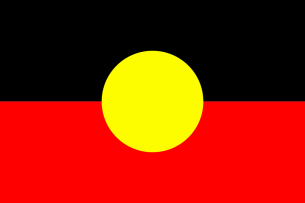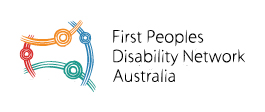The below information is a useful guide in welcoming people of Aboriginal and Torres Strait Islander backgrounds and enabling them to feel safe. It should be read together with the Quick Guides Aboriginal perspectives on disability and Tips for setting up Peer Networks in Communities.
Remember that this is just a guide and not a glossary of hard and fast rules. As with all guides there will be some that have other opinions.
Reaching out to ATSI community
A peer network is more likely to successfully invite and include Aboriginal people to participate if the outreach happens:
- by or with people who are trusted by the Aboriginal community
- through services that are trusted by the Aboriginal community
- together with an Aboriginal face
- in a way that is mindful of any tensions within a community and seeks neutral connectors and venues
- with written material using Aboriginal imagery and colours
Initial conversations
Initial conversations are most successful when they happen in a low key unthreatening way, for example over a cup of tea.
At a peer network meeting
Only Aboriginal people can offer a ‘welcome to country’. If the person doing this is not Aboriginal, then it is correctly termed ‘an acknowledgement of country’. It is important to acknowledge country but never put a new person identifying as Aboriginal on the spot by inviting them to do a ‘welcome to country’. Over time, an Aboriginal member may be happy to do a ‘welcome to country’ but the agreement to do so should happen via quiet private conversations.
Understand context
- It is important to recognise that Aboriginality is not about the colour of a person’s skin. Aboriginality means something different to each person. Physical appearance and lifestyle are irrelevant. The key is whether someone identifies as being Aboriginal.
- There is no word for disability in Aboriginal languages. This may help us to understand the more inclusive nature of Aboriginal communities where people with disability are generally not excluded from or stigmatised in their communities.
- The Aboriginal experience in white Australia has been one of colonisation, the removal of rights, the removal of people from country and of children from families.
- Historically people have not accessed services and hence many have missed the social change that the NDIS represents. Some will even be afraid of it
- When Aboriginal people do become members of a peer network, they may have expectations of the role of facilitator that are far above the expectations others have of the role. This means for example a person may ask the facilitator to follow up in solving personal challenges. It is very important the facilitator responds to these requests by seeking an appropriate person to assist.
Knowledge
Learn about the Aboriginal and/or Torres Strait Islander flags
- For information on where to purchase the flag, how to display it, and copyright, visit NAIDOC http:// www.naidoc.org.au/indigenous-australian-flags
- For purchase of flags and images representing flags, visit Birubi Art Australia http://www.birubiart. com/

- Black represents the Aboriginal people of Australia. Red represents the red earth, the red ochre used in ceremonies and Aboriginal people’s spiritual relationship to the land. Yellow disc represents the Sun, the giver of life and protector.

- Green represents the land. Blue represents the sea. White represents peace. Black represents the Indigenous peoples. The ‘dhari’ represents Torres Strait Islander people and the five-pointed star represents the five island groups within the Torres Strait. The star is also a symbol for seafaring people as it is used in navigation.
For more information:
First People’s Disability Network http://fpdn.org.au
Phone: +61 (2) 9267 4195
Email: enquiries@fpdn.org.au
Address: PO Box A2265 SYDNEY SOUTH NSW 123
Watch the Peer Connect webinar
https://player.vimeo.com/video/141860014
This fact sheet shares insights about inclusion from an early childhood service perspective.
Many non-Aboriginal Australians may have limited understanding of, or contact with, Aboriginal communities.
This means that non-Aboriginal people and organisations are not always sure how best to engage, consult and work with the local Aboriginal community.
The following organisations can help with information on how to conduct culturally appropriate welcoming ceremonies, events and acknowledgements.
The Office of Aboriginal Affairs Victoria (OAAV) is a key agency that provides advice to the Victorian Government on Aboriginal policy and delivers a range of programs.
The Victoria Government has published this guide to helping your organisation to create a welcoming environment for Aboriginal and Torres Strait Islander people.
This guide gives ideas about communicating effectively
Co-authored by First Peoples Disability Network

The information on this page is also available as a downloadable Quick Guide, by clicking below. There are PDF and word versions.
